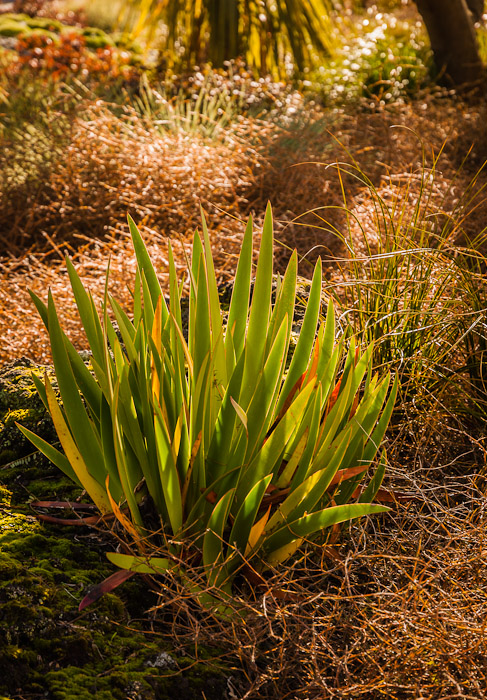A sunny midwinter's day, with errands to do in the city, I took my camera just in case I had time...

And I did! I enjoy the way that NZ native plants are used for amenity planting, such as on large inner city traffic islands like this one. I've been admiring it for a while.
The plants are presumably chosen for their ability to cope with the adverse conditions and because they don't need a lot of fussing and attention once established.
NZ native plants don't tend to have colourful flowers, and they are mostly evergreen. So there aren't the dramatic spring or autumn displays that are associated with a lot of introduced plants. But there is a great range of textures and forms so that plantings of NZ natives can be dramatic, quirky, and even quite colourful.
I especially like the glow and intensification of colour that occurs when the plants are backlit. The daylight was bright and harsh, but under the partial shade of a cordyline and a kowhai which you can't see, the plants show their rich greens, reds, orange and brown. If and when the Xeronema gets around to flowering - this is still a small plant, and they can be shy about flowering even when conditions seem perfect - it will add a glorious spike of red.
Xeronema callistemon (Poor Knights lily) beside a mossy stone, surrounded by twisted wiry stems of Coprosma acerosa - possibly the form called Red Rocks, and grassy Carex testacea.














